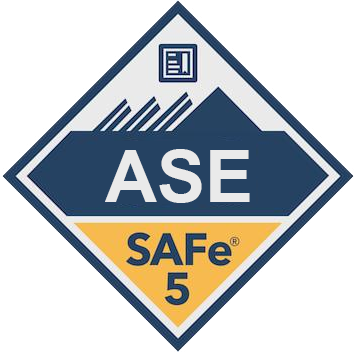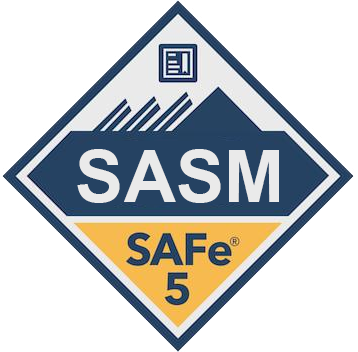Agile Testing in a DevOps World: Achieving Continuous Testing Excellence
Explore the integration of Agile testing practices into DevOps pipelines for continuous testing.
In the dynamic landscape of software development, the integration of Agile testing practices into DevOps pipelines has become essential for achieving continuous testing and ensuring the delivery of high-quality software products. This article delves into the integration of Agile testing methodologies into DevOps pipelines, highlighting the benefits, challenges, and best practices associated with continuous testing in Agile-DevOps environments.
Understanding Agile Testing Practices
- Agile testing principles: Brief overview of Agile testing methodologies such as Test-Driven Development (TDD) and Behavior-Driven Development (BDD).
- Emphasis on collaboration: Highlighting the importance of collaboration between developers, testers, and other stakeholders throughout the development lifecycle.
- Iterative testing: Discuss the iterative nature of Agile testing, where testing activities are integrated into each sprint or iteration.
DevOps and Continuous Testing:
- Introduction to DevOps: Brief overview of DevOps principles, emphasizing automation, collaboration, and continuous integration and delivery.
- Importance of continuous testing: Exploring the role of continuous testing in DevOps pipelines for ensuring the reliability, stability, and quality of software releases.
- Shift-left testing: Discussing the concept of shifting testing activities earlier in the development process to detect and address issues sooner.
Integration of Agile Testing Practices into DevOps Pipelines:
- Automated testing: Implementing automated testing frameworks and tools (e.g., Selenium, JUnit) to automate regression testing, unit testing, and integration testing.
- Test-driven development (TDD): Incorporating TDD practices into DevOps pipelines, where tests are written before code is developed to ensure code quality and test coverage.
- Behavior-driven development (BDD): Leveraging BDD frameworks (e.g., Cucumber, SpecFlow) to define acceptance criteria and automate acceptance testing within DevOps workflows.
- Shift-right testing: Extending testing activities into production environments through techniques such as monitoring, A/B testing, and canary releases to gather real-time feedback and improve product quality.
Benefits and Challenges:
- Benefits of integrating Agile testing into DevOps pipelines: Faster feedback cycles, reduced time-to-market, improved software quality, and enhanced collaboration between development and testing teams.
- Challenges and considerations: Overcoming cultural barriers, skill gaps, tooling complexities, and ensuring the reliability and stability of automated tests in dynamic DevOps environments.
Best Practices for Successful Integration:
- Foster a culture of collaboration and shared responsibility between development and testing teams.
- Invest in automation: Prioritize the automation of repetitive testing tasks to streamline DevOps pipelines and accelerate feedback loops.
- Implement comprehensive monitoring and logging: Establish robust monitoring and logging mechanisms to detect issues in production environments and gather actionable insights for continuous improvement.
- Continuously evaluate and refine testing strategies: Embrace a culture of continuous improvement, where testing practices are regularly evaluated, refined, and adapted to meet evolving requirements and challenges.
Conclusion:
The integration of Agile testing practices into DevOps pipelines is essential for achieving continuous testing and delivering high-quality software products efficiently. By leveraging automation, collaboration, and iterative testing methodologies, organizations can streamline their development processes, accelerate time-to-market, and enhance customer satisfaction in today’s fast-paced and competitive software industry. Embracing a culture of continuous improvement and innovation is key to success in Agile-DevOps environments, where agility, speed, and quality are paramount.
Agile testing aligns with DevOps principles and enables faster and more reliable software delivery.
Introduction:
As software development practices evolve, the integration of Agile testing methodologies with DevOps principles has emerged as a powerful strategy for achieving faster and more reliable software delivery. This article explores how Agile testing aligns with DevOps principles and contributes to the acceleration of software delivery cycles while maintaining high-quality standards.
Understanding Agile Testing and DevOps Principles:
- Agile testing principles: Brief overview of Agile testing methodologies emphasizing iterative testing, continuous feedback, and collaboration between development and testing teams.
- DevOps principles: Introduction to DevOps principles focusing on automation, collaboration, continuous integration, continuous delivery, and rapid feedback.
Alignment of Agile Testing with DevOps Principles:
- Automation: Agile testing practices such as automated unit testing, integration testing, and acceptance testing align with DevOps automation principles, enabling the creation of automated test suites integrated into the CI/CD pipeline.
- Collaboration: Agile testing fosters collaboration between developers, testers, and other stakeholders, aligning with DevOps principles of cross-functional teams and sharing responsibility for quality throughout the development lifecycle.
- Continuous Integration (CI): Agile testing ensures that tests are continuously integrated into the CI process, enabling early detection of defects and ensuring that code changes do not break existing functionality.
- Continuous Delivery (CD): By integrating testing activities into the CD pipeline, Agile testing enables the rapid and reliable deployment of code changes to production, ensuring that software updates are delivered to end-users quickly and with confidence.
- Rapid Feedback: Agile testing provides rapid feedback on the quality of code changes, enabling teams to identify and address issues early in the development process, thereby reducing the risk of defects and improving overall software quality.
Benefits of Agile Testing in DevOps:
- Faster time-to-market: By integrating testing activities into the development process and automating testing tasks, Agile testing enables faster delivery of software updates, allowing organizations to respond quickly to changing market demands.
- Improved software quality: Agile testing ensures that software updates undergo rigorous testing before deployment, resulting in higher-quality releases with fewer defects and improved user satisfaction.
- Enhanced collaboration: Agile testing promotes collaboration between development, testing, and operations teams, breaking down silos and fostering a culture of shared responsibility for quality throughout the organization.
- Increased efficiency: By automating repetitive testing tasks and streamlining testing processes, Agile testing reduces manual effort and increases the efficiency of development and deployment workflows.
Best Practices for Integrating Agile Testing with DevOps:
- Start small and iterate: Begin by integrating automated testing into the CI/CD pipeline for critical components, and gradually expand testing coverage over time.
- Invest in automation: Prioritize the automation of repetitive testing tasks to accelerate feedback cycles and improve efficiency.
- Foster a culture of collaboration: Encourage communication and collaboration between development, testing, and operations teams to ensure that quality is everyone’s responsibility.
- Continuously monitor and optimize: Regularly monitor testing processes and performance metrics, and identify opportunities for optimization and improvement.
Conclusion:
Agile testing plays a crucial role in enabling faster and more reliable software delivery in DevOps environments by aligning with DevOps principles and facilitating automation, collaboration, and continuous feedback. By integrating Agile testing practices into the development process and embracing a culture of quality throughout the organization, teams can accelerate delivery cycles, improve software quality, and ultimately deliver greater value to customers.
Achieving Continuous Testing Excellence in Agile: Tools and Best Practices
Introduction:
Continuous testing is a critical component of achieving continuous quality improvement in Agile development environments. By integrating testing activities seamlessly into the software delivery pipeline, organizations can ensure that defects are detected early, quality is maintained throughout the development process, and software updates are delivered to customers with confidence. This article explores the tools and best practices that enable organizations to achieve continuous testing excellence in Agile projects.
Understanding Continuous Testing in Agile:
- Definition: Continuous testing involves the automated execution of tests throughout the software delivery pipeline to provide immediate feedback on the quality of code changes.
- Importance: Continuous testing helps identify defects early, ensures that code changes do not introduce regressions, and enables rapid delivery of high-quality software.
- Integration with Agile: Continuous testing aligns with Agile principles by promoting iterative testing, collaboration between development and testing teams, and a focus on delivering working software incrementally.
Essential Tools for Continuous Testing:
- Test Automation Frameworks: Utilize frameworks such as Selenium, Appium, and Cypress for automating functional testing across web, mobile, and desktop applications.
- Test Management Tools: Implement tools like Jira, TestRail, or Zephyr for managing test cases, tracking test execution, and generating reports.
- Continuous Integration (CI) Servers: Use CI servers such as Jenkins, Travis CI, or GitLab CI to automate the execution of tests as part of the build process.
- Performance Testing Tools: Employ tools like JMeter, Gatling, or LoadRunner for conducting performance and load testing to ensure application scalability and reliability.
- API Testing Tools: Leverage tools such as Postman, SoapUI, or Insomnia for automating API testing and validating API functionality.
Best Practices for Continuous Testing Excellence:
- Shift-Left Testing: Integrate testing activities early in the development process to detect and address defects as soon as possible.
- Test Automation: Prioritize the automation of repetitive and high-impact tests to accelerate feedback cycles and improve testing efficiency.
- Comprehensive Test Coverage: Ensure that test suites cover a wide range of scenarios, including functional, regression, performance, security, and usability testing.
- Continuous Feedback: Establish mechanisms for providing feedback on test results to development teams in real-time, enabling them to address issues promptly.
- Parallel Testing: Execute tests in parallel across multiple environments and platforms to reduce test execution time and increase testing throughput.
- Environment Management: Maintain consistent and reproducible test environments to ensure reliable and accurate test results.
- Collaboration: Foster collaboration between development, testing, and operations teams to ensure alignment on testing priorities, strategies, and goals.
Continuous Improvement:
- Metrics and Analytics: Define and track key performance indicators (KPIs) related to testing effectiveness, such as test coverage, test execution time, and defect density.
- Retrospectives: Conduct regular retrospectives to reflect on testing practices, identify areas for improvement, and implement actionable changes.
- Learning Culture: Encourage a culture of continuous learning and experimentation, where team members are empowered to explore new testing techniques, tools, and approaches.
Conclusion:
Continuous testing is essential for achieving continuous quality improvement in Agile projects, enabling organizations to deliver high-quality software at speed. By leveraging the right tools and adopting best practices such as test automation, comprehensive test coverage, and continuous feedback, organizations can establish a culture of testing excellence and drive continuous improvement in their testing processes. Embracing a mindset of continuous learning and collaboration is key to adapting to evolving testing challenges and delivering value to customers consistently.
For more posts like this follow Agile Digest social Pages or subscribe to our newsletter:
Wesbite: https://agiledigest.com/
Facebook: https://www.facebook.com/agiledigest/
LinkedIn: https://www.linkedin.com/company/agiledigest/
Youtube: https://www.youtube.com/@AgileDigest








































































